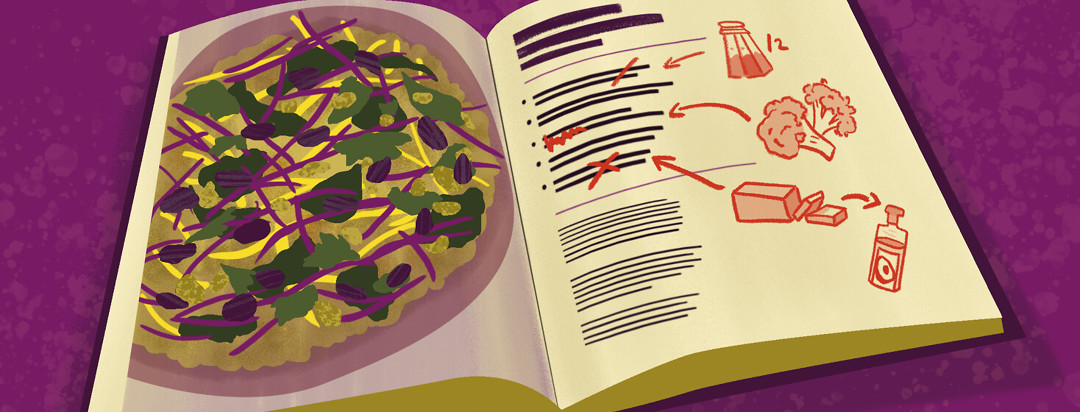Tweaking a Recipe
With the internet and social media, new recipes are always available! You may see something that looks delicious and think “there’s no way I could eat that.” On the contrary, recipes can often be easily tweaked to become more appropriate for any diet you are trying to follow.
How to change a recipe to be more diabetes-friendly
Here are a few tips on making that recipe work for you:
Protein
When it comes to protein sources, do not feel like you have to use the same option that was put in the original recipe. By choice, you may prefer chicken over beef or vegetarian options over meat. Do not be afraid to substitute your favorite protein option in any dish. For example, if a soup calls for chicken, do not be afraid to use garbanzo beans or even lean pork in its place. Make sure you account for the extra carbohydrates when using a legume. Nuts are also a great way to add protein and healthy fats to a meal. Consider adding nuts to a favorite Asian or pasta dish in place of the usual meat.
Fats
Since diabetes and cardiovascular disease go hand-in-hand, you may be concerned with your fat intake as well as your carbohydrate intake. Just because a recipe calls for a certain amount of oil or butter does not mean you must follow that. Do not be fearful of using less or omitting it altogether. Another option is to choose an alternate oil in place of the one listed. Avocado oil, olive oil, and plant-based butter can be healthier options. The main purpose of fat in any recipe is to provide flavor. If you feel that the recipe will be too bland, you can also add extra herbs and spices to increase the appeal.
Salt
Hypertension, or high blood pressure, can also be a common health condition when you have diabetes. Being mindful of salt intake is a good idea for everyone. Just one teaspoon of salt has 2,360 mg of sodium, which is almost the same as the 2,400 mg of sodium that is recommended for daily allowance (RDA)! Many recipes call for copious amounts of salt when a blend of herbs and spices could be just as flavorful, if not more! When buying seasonings, try sodium-free versions such as garlic powder and onion powder instead of garlic salt and onion salt. Mrs. Dash® has a large line of spice blends for any flavor palette you are looking for, all made without sodium. Adding fresh herbs such as basil and cilantro can elevate your dish and leave it looking and tasting extra fresh. Even adding fresh onion and garlic can be more than enough additional taste and aroma. You won’t even miss the salt you didn’t add!
Carbohydrates
Many dishes may call for rice and pasta. You can absolutely omit these or even replace them with high fiber options such as quinoa, or even extra non-starchy vegetables. For example, instead of using white rice in a stir-fry, opt for brown rice or even double or triple the amount of non-starchy vegetables in lieu of rice. The added fiber should help you remain satisfied, even without that processed white rice.
Be adventurous with your recipe changes
Do not feel limited by the exact ingredients of any given recipe. You have the knowledge and ability to change it up and make it more appropriate for you and your lifestyle!

Join the conversation